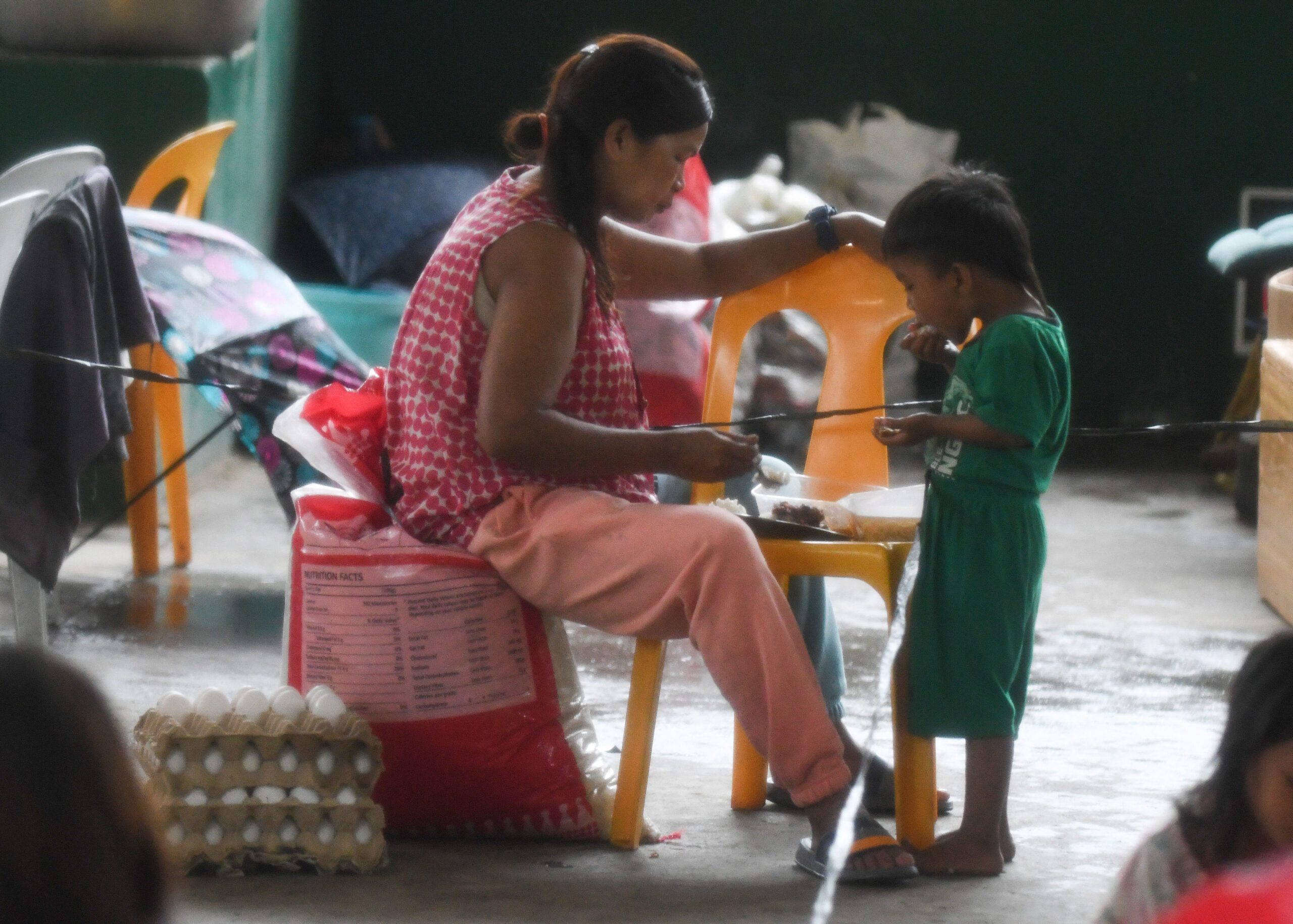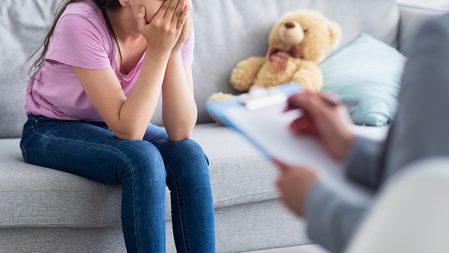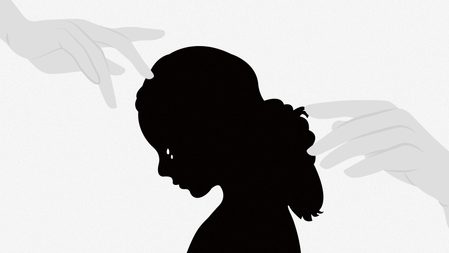SUMMARY
This is AI generated summarization, which may have errors. For context, always refer to the full article.

It’s been several weeks since Typhoon Odette cut a huge swath through the Philippines, but in many areas, life is only just now starting to get back to normal. Numerous neighborhoods have only just had their electricity restored (and some still haven’t). Water supply remains an issue in some areas; ditto for Internet connection. And classes in many school districts have only just resumed for the first time since December.
As parents, our immediate concern after a natural disaster is making sure our family’s physiological needs are met: food, water, shelter, physical safety. But once those have been taken care of, something we need to do that sometimes isn’t so obvious to us is to check on our kids’ mental and emotional state.
Children aren’t immune to the stress and trauma brought by calamities. They, too, are wired to survive and their bodies produce a fight-or-flight response in the face of danger: their hearts beat faster, their senses go on high alert. But while a majority of kids recover pretty quickly, others – especially younger ones – may get overwhelmed. They may “get triggered” and jump out of their skin when they hear thunder, or they may have less obvious symptoms of traumatic stress such as an inability to concentrate. Some may seem mostly okay in the first month after a disaster but, once the numbness wears off, they may then begin to behave in a way that isn’t normal for them. These kids may need help from the adults in their lives to get over what happened and start to feel safe again.
How can you tell if a child is experiencing traumatic stress?
Signs that your child may be experiencing some degree of traumatic stress include:
- Changes in sleeping, eating, or toileting patterns
- Crying, screaming, or whining more than usual
- Increased sensitivity to loud noises like thunder
- Hypervigilance
- Having nightmares or flashbacks to the event
- Becoming more clingy
- Developing unfounded fears
- Regressing to early childhood behavior, like thumb-sucking, bedwetting, or using baby talk
- Freezing up or moving aimlessly
- Losing interest in friends and family
- Losing interest in activities they used to enjoy
- Becoming moody, unreasonably angry, irritable, or disruptive
- Reporting physical problems that may actually be due to anxiety, such as headaches, nausea, or stomachaches
- Having difficulty concentrating
- Struggling unusually with school work
- Refusing to attend school
These signs and symptoms vary from child to child so it’s important to really observe your own child and take note of behaviors that aren’t normal for them.
Children are more likely to experience these problems if they:
- personally witnessed multiple alarming events, like seeing windows break, trees fall, the roof flying off, or someone getting injured;
- encountered additional stressors during the recovery period, like separation from caregivers, having to relocate, witnessing physical or verbal violence in the community, or having a parent lose a job; or
- missed school and other established routines for an extended period of time after the event.
How can you help kids cope after a traumatic event?
1. Make your child feel safe.
In times of crisis, children – even teenagers – look to their parents for comfort and reassurance. Assure them that you are there for them, that you will take care of them, and that you will do everything to keep them safe.
Don’t forget to communicate your presence physically: with extra cuddles for younger kids, pats on the back for older kids, an arm around their shoulders, frequent hugs. All these will help give kids back their sense of security that was shaken by the calamity.
2. Control your own response.
Kids usually take cues from their parents on how to act and react, so it’s important for you to stay calm yourself. Be aware of the tone of your voice – keep it low and slow – and avoid discussing worst-case scenarios in front of your children.
Natural disasters can be distressing even for adults, so take steps to cope with your own stress and anxiety. For example, you can do breathing and mindfulness exercises – you can even do these with your kids. When you take care of yourself, not only will you be better able to take care of your children, you also model healthy coping behaviors to them.
3. Minimize exposure to media coverage of the event.
Seeing disturbing events being replayed over and over again on TV or online can make it seem that the event is still ongoing, especially to toddlers and younger children. This can overwhelm their nervous system and can actually be further traumatizing.
Instead, encourage activities that will keep your kids’ minds occupied and off the traumatic event. Talk about the future and make plans. Children recover more quickly if they realize that a scary event is only temporary and doesn’t disrupt their entire future.
4. Encourage your child to open up about how they are feeling.
If a child admits to feeling worried, don’t immediately say, “Oh, don’t worry!” That might cause them to clam up. Instead, you can acknowledge their feelings and simply say, “Yes, I can see that you’re worried.” Let them know that whatever they feel is valid – whether it’s fear, anger, guilt, anxiety, grief, helplessness, or if they’re perfectly okay. Allow them to mourn any loss, even if it’s “just” a favorite toy that got damaged by the storm.
If your child is more comfortable opening up to another trusted adult, give them the space to do so. What’s important is that they talk about their experience, even if it’s not with you.
Some kids find it difficult to talk about an experience that was harrowing for them. Don’t pressure them into talking. Pick a good time; find natural openings for discussion. Try to see if they might find it easier to express their feelings through drawing. Provide them with materials and afterwards you can try talking to them about what they’ve drawn.
5. Don’t expect too much from your kids right after a natural disaster.
Their bodies need to come down from a state of hypervigilance; their minds need to process what they’ve been through. Let them rest.
This doesn’t mean that they should be doing nothing all day – on the contrary, they also need some structure around them, as will be discussed in more detail below – but do lower your expectations in terms of household duties and school work, especially in the period immediately after a disaster.
Just as you shouldn’t pressure yourself to do all your needed house repairs in one day, instead allowing yourself to take it one task at a time so as not feel overwhelmed, children too should not be overburdened in a rush to get back to normal.
6. Stick to a routine.
Try as much as possible to have regular mealtimes and bedtimes. Do “normal” activities together. Encourage your child to do the things they enjoyed doing before. Continue observing family rules and standards for good behavior.
If you have had to relocate, or if you’re in a situation that makes it impossible to keep your old routines, try to establish new ones.
In the chaos and uncertainty after a natural disaster, routines give structure to your child’s days. Kids function better when they know what to expect. Having a routine will reassure them that the calamity has not taken over every aspect of their lives and help them realize that, already, life is starting to get back to normal.
7. Look for the helpers. Be the helpers.
A Mr. Rogers quote that always resonates during times of collective distress is, “When I was a boy and I would see scary things in the news, my mother would say to me, ‘Look for the helpers. You will always find people who are helping.'” Talk with your kids about what people are doing to help, whether it’s neighbors sharing food with each other, relatives helping the family haul water, or linemen from other provinces coming in to help restore power lines.
And if they’re ready for it, encourage your child to lend a hand themselves! Help them identify things that they can do safely: small tasks within the home for younger kids, outdoor work or community mobilization for older kids. At a time when outside events might be making them feel helpless, being able to do something for others will help your kids take back a sense of control and give them a sense of accomplishment and purpose.
We can’t always prevent scary things from happening to our kids but we can support them as they work through the stages of processing what happened and make them feel safe and secure again. – Rappler.com
Ligaya Solera’s background is in psychology and medicine, but these days she’s “Teacher Nanay,” doing Montessori homeschooling with her 9-year-old son for nearly two years now. Creating free online worksheets for fellow parent-child learning tandems isn’t *quite* as thrilling as traveling to dream destinations on a budget – but strangely enough, it’s just as fulfilling.
Add a comment
How does this make you feel?







There are no comments yet. Add your comment to start the conversation.